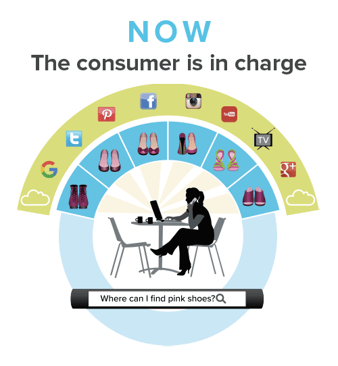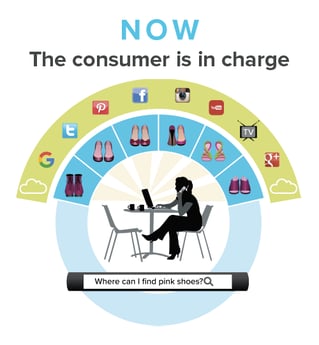Supplier to Partner: How To Make the Most of Retailer Relationships

 Over the past decade, the world of retail has changed dramatically. Not only do digitally-empowered customers now shop at their own convenience – when, where and how they want. But there has also been a power shift between brands and retailers. A brand can’t simply send a salesperson to a retailer’s headquarters, compete for shelf space, supply retailers with product and expect the best results. According to a recent McKinsey article, the balance of power in the consumer industry has “tilted”: “Retail buyers are more sophisticated, more analytical, and more demanding than ever.”
Over the past decade, the world of retail has changed dramatically. Not only do digitally-empowered customers now shop at their own convenience – when, where and how they want. But there has also been a power shift between brands and retailers. A brand can’t simply send a salesperson to a retailer’s headquarters, compete for shelf space, supply retailers with product and expect the best results. According to a recent McKinsey article, the balance of power in the consumer industry has “tilted”: “Retail buyers are more sophisticated, more analytical, and more demanding than ever.”
The rise of the endless aisle is changing the seller/buyer relationship in retail. Every major big-box retailer, for instance, has dramatically expanded its assortments by millions of SKUs and want to list every product in every category they carry on the website. On the brand side, dropshipping has enabled brands to increase their assortments across and within retailers, and the competition is now for top search results on the biggest e-commerce sites and Google, rather than a negotiation for limited physical shelf space.
Obviously, this means the relationship between brands and retailers has had to be reimagined. Collaboration has become the key to success: In fact, according to the State of the Retail Supply Chain 2016 report, nearly 44% of retailers believe that better collaboration with suppliers is a top-three issue in the areas of supply chain planning and execution. In addition, Accenture found that 75% of CPG manufacturers expected improved collaboration with retailers through digital transformation.
In addition, retailers are asking far more of brands when it comes to data delivery. This makes sense — in the old days (believe it or not, as recently as just a couple of years ago) when retailers only onboarded the SKUs that fit on their physical shelves and in warehouses, they could afford to do their own content creation for merchandising.

Now, this is clearly impractical — no retailer has enough staff to take photos and write copy for the thousands upon thousands of products on their site, let alone personalize that content for their unique audience.
Instead, retailers want more of that content from their partner brands, who now have to turn around and provide unique content that works for each retailer, because each retailer has different target customers, website strategies, mobile apps and category structures.
The Big Retail Relationship Opportunity
These new retail expectations are a massive opportunity for brands to differentiate themselves from competition that doesn’t step up to the plate. In addition, the brand also has complete control over their content, within retailer guidelines, to make sure it is presented properly on the digital shelf.
Today, the brand serves less of a salesperson and more as a merchandising partner. You can boost your supplier-partner relationship by:
- Completing item listings as quickly as possible and making them look perfect.
- Revisiting old listings to make sure content is optimized for visuals and performance.
- Analyzing which products are doing well in each channel and investing more in areas such as videos or other content.
- Analyzing which products are do poorly each channel and introduce new, improved content.
- Collaborating with retailers — not just the buyers — to determine how to products can perform better, such as pay-to-play programs to boost search results.
The bottom line is that for retailers and brands, merchandising operations has moved front and center — and sales is no longer just about, well, sales. Instead, it’s about communicating about your entire catalog with retail partners, rather than just a handful of products on a shelf so that the consumer can learn about your product no matter where they shop. With that in mind, your relationship with key retailers will grow, evolve, and, ultimately, thrive in today’s digital retail universe.
To read more about taking your brand-retailer relationships to the next level, click here to download Winning at Distributed Commerce.
Written by: Michelle Burtchell
Michelle Burtchell (she/her) is the former head of marketing at Salsify, where she focused on data-driven solutions to market challenges.
Recent Posts
Do Brands Need Social Media Influencers In The Age of AI?
How Can Brands Align With Consumers’ New Year’s Resolutions?
5 Ecommerce Tips To Help Marketers Enter the New Year Stress-Free
Subscribe to the Below the Fold Newsletter
Standing out on the digital shelf starts with access to the latest industry content. Subscribe to Below the Fold, our monthly content newsletter, and join other commerce leaders.

.svg)